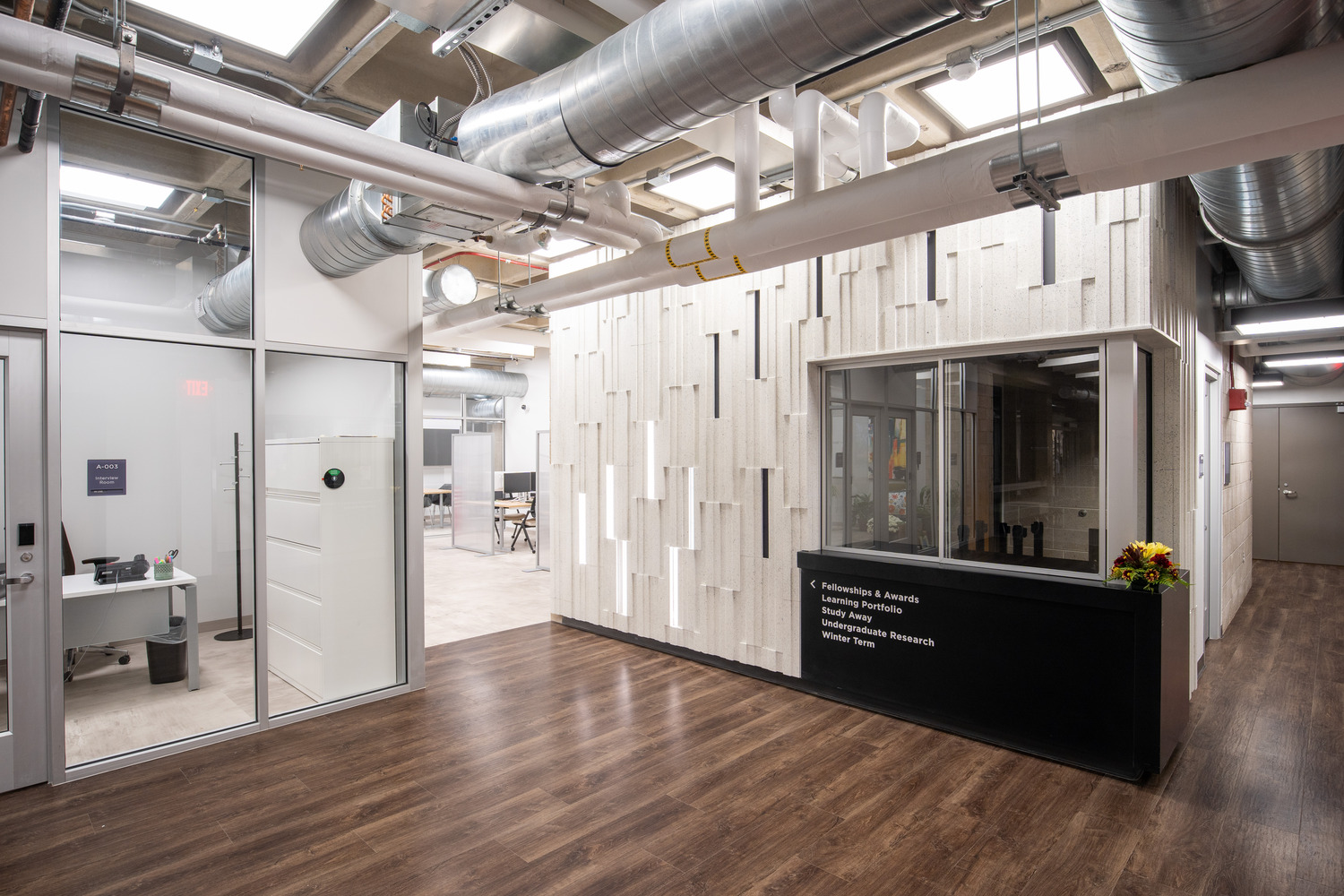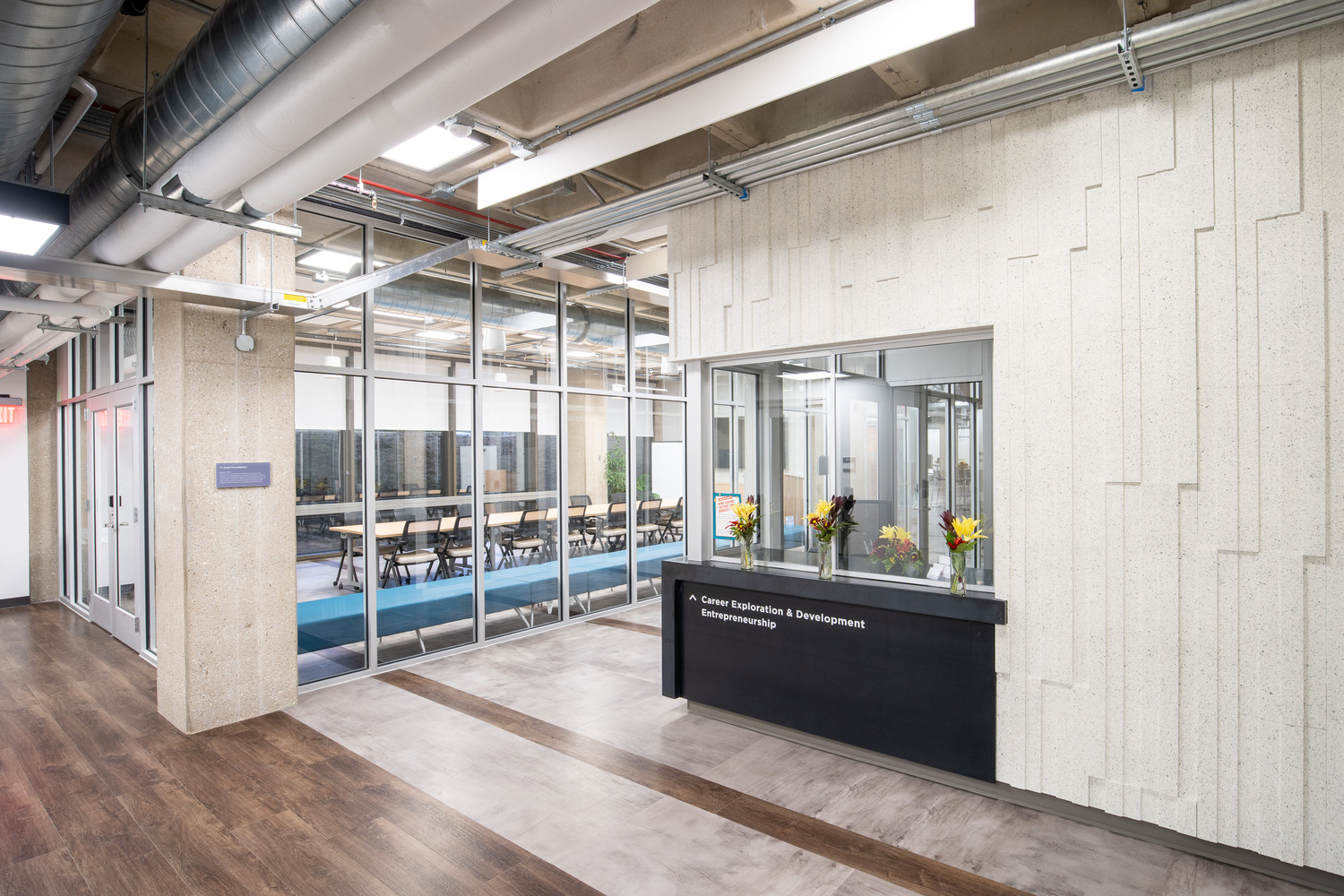Share This Story
Nestled in the picturesque landscape of Oberlin, OH, Oberlin College & Conservatory has been a bastion of higher education since 1833, standing as the oldest coeducational liberal arts college in the United States.
Understanding that truly impactful learning happens beyond the classroom, the institution places a premium on practical education, offering a kaleidoscope of experiences—from internships and study-away opportunities to winter term activities and fellowships, in addition to traditional coursework—through its Center for Engaged Liberal Arts (CELA).
However, with CELA programs scattered across campus, administrators sought to create a unified “home” that would bring them all under one roof, streamlining access for both students and faculty.
The plan? To convert the 37,000 sq. ft. garden-level space in the Mudd Center—a 1971 brutalist design gem that accommodates the campus’ main library—into the new CELA hub.
Following extensive visioning sessions with college administrators, the CPL Cleveland team (formerly MPA) and Osborn Engineering were entrusted with the renovation, which encompassed the full spectrum of architectural, interior and engineering design. Collaboration was vital to the project’s mission, with a centralized goal of fostering stronger campus connections between students and staff.
“The library already served as a central gathering spot, so positioning CELA in its lower level was a natural, strategic choice,” said CPL Principal, Stephen Jouriles. “We kept this need for unity top of mind as we approached design for each space.”
Completed in 2023, the reimagined hub marries the original brutalist design with modern elements, including new wall placements, finishes and furniture layouts; this fusion preserves the building’s structural character while promoting a sense of openness, encouraging interaction among all visitors. Aside from CELA programs and curriculums, the floor also houses the school’s data center, the library’s book receiving department, Computer Information Technology (CIT) Client Services and the I.D. card office.

Lounges throughout the center double as flexible workspaces for both public and private study, with movable furniture for easy rearrangement. Distinct accent colors in each space mirror its corresponding services to aid wayfinding; the team joined forces with department deans to establish these unique identities using different finishes, all while maintaining cohesion through a shared color palette.
The faculty offices and conference rooms merge with core gathering spaces through transparent glass curtain walls, inviting visitors in with direct views. Each office also features acoustic panels that resemble woodgrain, increasing sound absorption and harmonizing with the building’s industrial materials.
Moreover, the airy yet brutalist design includes minimalist furnishings to drive socialization, and economical storage to support the college’s initiative to “go paperless” and become carbon-neutral by 2025. To further bridge student and staff spaces, the flooring seamlessly extends from separate conference rooms into the lounges; this reflects the CELA philosophy, applying the foundation of a liberal arts education to personal, professional and public engagements in contemporary life.

Other enhancements include audio-visual technology integration to allow for both in-person and virtual meetings; upgraded mechanical, electrical and plumbing (MEP) systems; and the removal of lay-in ceilings to expose the building’s waffle slab construction and utilities—enhancing the structure rather than hiding it, while also embracing the industrial aesthetic.
After years of planning and construction, the $10 million facility was honored with a ribbon-cutting ceremony in the fall of 2022, providing the college with a much-needed resource; it also received recognition during the 2023 International Interior Design Association’s (IIDA) Cleveland-Akron Design Awards.
Today, the CELA hub represents Oberlin’s dedication to enriching learning experiences for all students. More than a space, it’s a testament to the belief that education is not confined to the classroom, but weaved into the very fabric of campus life.


